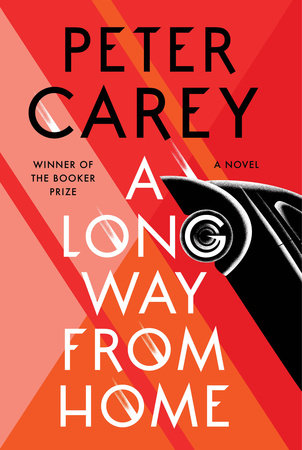A Long Way from Home, A novelPosted in Books, Media Archive, Novels, Oceania, Passing on 2018-03-05 01:46Z by Steven |
Knopf
2018-02-27
336 pages
6-1/4 x 9-1/4
Hardcover ISBN: 9780525520177
eBook ISBN: 9780525520184
The two-time Booker Prize-winning author now gives us a wildly exuberant, wily new novel that circumnavigates 1954 Australia, revealing as much about the country/continent as it does about three audacious individuals who take part in the infamous 10,000-mile race, the Redex Trial.
Irene Bobs loves fast driving. Her husband is the best car salesman in southeastern Australia. Together they enter the Redex Trial, a brutal race around the ancient continent, over roads no car will ever quite survive. With them is their lanky, fair-haired navigator, Willie Bachhuber, a quiz show champion and failed schoolteacher who calls the turns and creeks crossings on a map that will remove them, without warning, from the white Australia they all know so well. This is a thrilling high-speed story that starts in one way, and then takes you someplace else. It is often funny, more so as the world gets stranger, and always a page-turner even as you learn a history these characters never knew themselves.
Set in the 1950s, this is a world every American will recognize: black, white, who we are, how we got here, and what we did to each other along the way.
A Long Way from Home is Peter Carey’s late-style masterpiece.






